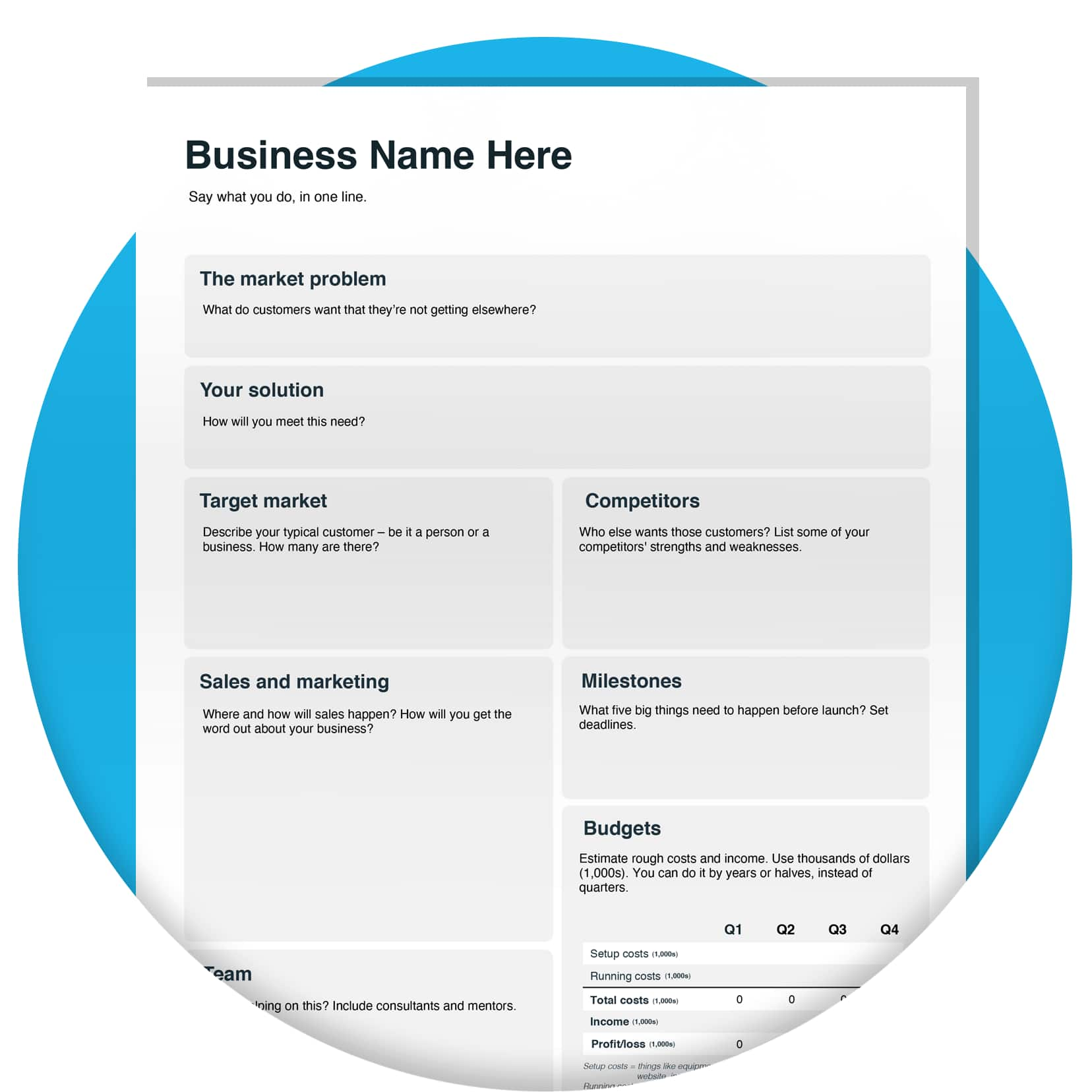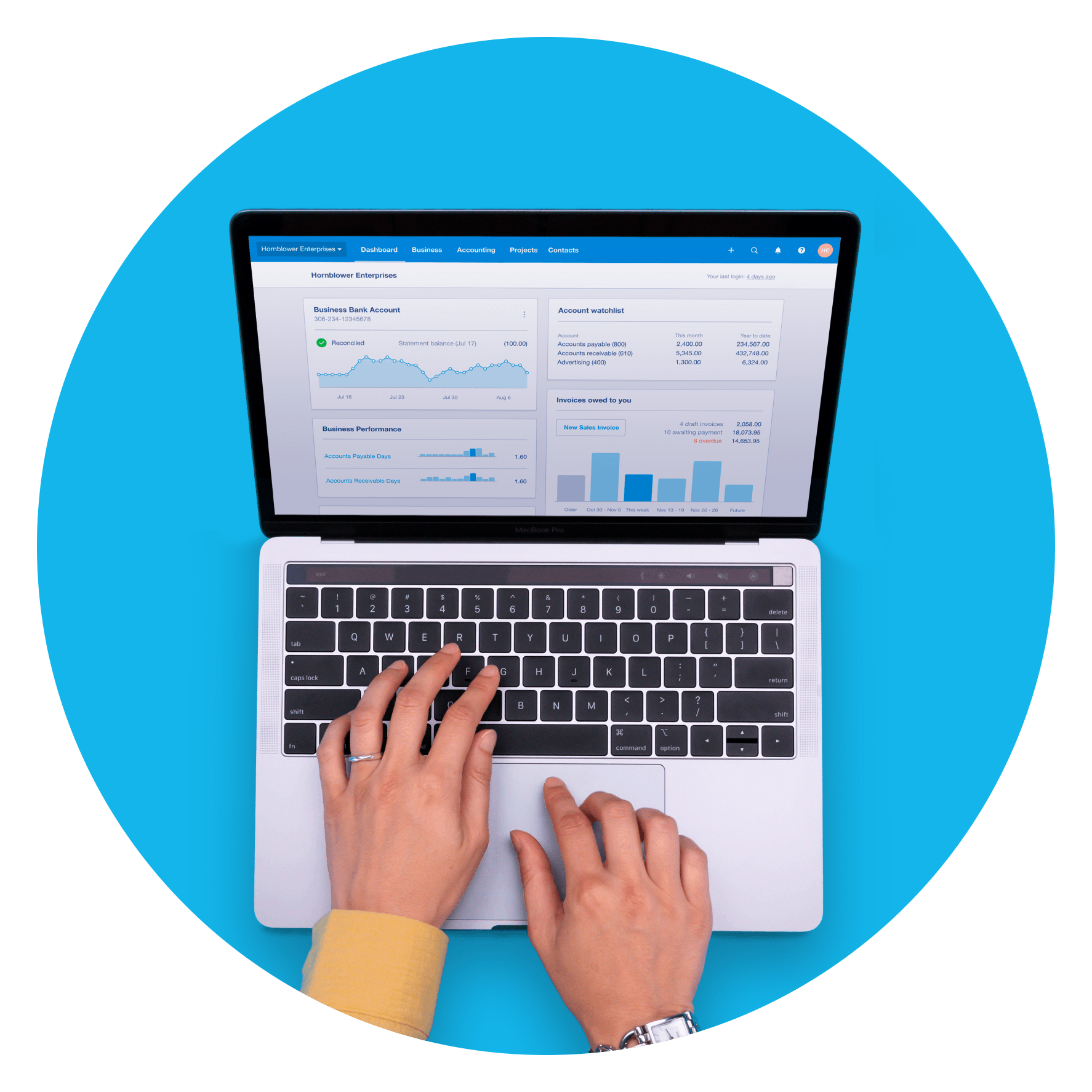
Xero is your partner in all aspects of your business, not just accounting software. Whether you need a multi-page or one-page business plan template, our free business plan template comes ready to fill in, complete with instructions. Download a business plan sample today.

business plan template
Fill out the form for a downloadable business plan template. Your business plan doc is available as an editable pdf to use again and again.
A business plan is essential for the success of your small business or startup. It helps guide the direction of your business and explains your vision to others. A reusable single- and multi-page template lets you tailor your pitch for investors, staff, and prospects. Plans help:
Startups decide if the idea is viable.Small businesses gauge the competition, determine their competitive advantages, set goals, and plan marketing strategies.

Our business plan template:
Our business plan’s customisable structure lets you accurately present your financial data.
Each business plan component comes with an annotated explanation to help you write your plan.
Simplify your mission, then focus it for investors with two different templates.
Develop a concise mission statement about why your company exists and how it differs from similar companies. For example, Google’s statement is ‘To organise the world's information and make it universally accessible and useful’. LinkedIn’s statement is 'Connect the world’s professionals to make them more productive and successful'. Then, develop business goals and objectives that fit with your statement. For example, LinkedIn’s objectives would specify metrics around the number of professionals and connections.
Develop a concise mission statement about why your company exists and how it differs from similar companies. For example, Google’s statement is ‘To organise the world's information and make it universally accessible and useful’. LinkedIn’s statement is 'Connect the world’s professionals to make them more productive and successful'. Then, develop business goals and objectives that fit with your statement. For example, LinkedIn’s objectives would specify metrics around the number of professionals and connections.
Sharpen your value propositionA value proposition presents the specific benefits your product or service brings to your customer, reinforces your brand identity, and give your team a focus. Business plan examples of value propositions might be: 'We help our customers feel good by fueling up with exceptional coffee in a community environment’, or ‘We help our customers choose the right gift in less than 10 minutes’.
A value proposition presents the specific benefits your product or service brings to your customer, reinforces your brand identity, and give your team a focus. Business plan examples of value propositions might be: 'We help our customers feel good by fueling up with exceptional coffee in a community environment’, or ‘We help our customers choose the right gift in less than 10 minutes’.
Outline your ideal customerA business plan for startups defines its target customers. All businesses should include market analysis in their business plans and update their analysis regularly. Start with your customers’ demographics. Then use the internet and primary sources like surveys and interviews) to learn more. Next, identify competitors and determine their strengths and weaknesses. Compare them with each other and decide where you fit within the competitive environment.
A business plan for startups defines its target customers. All businesses should include market analysis in their business plans and update their analysis regularly. Start with your customers’ demographics. Then use the internet and primary sources like surveys and interviews) to learn more. Next, identify competitors and determine their strengths and weaknesses. Compare them with each other and decide where you fit within the competitive environment.
Market your businessSuccessful small businesses promote their brands through websites, social media, broadcast ads, or sponsorships. They also use various sales channels, including online, brick-and-mortar stores, affiliates and distributors. Your business plan market analysis helps you decide the marketing strategies for your industry, product, and target audience. It also will help you predict annual sales – a key part of your financial planning.
Successful small businesses promote their brands through websites, social media, broadcast ads, or sponsorships. They also use various sales channels, including online, brick-and-mortar stores, affiliates and distributors. Your business plan market analysis helps you decide the marketing strategies for your industry, product, and target audience. It also will help you predict annual sales – a key part of your financial planning.
Structure your business and set up operationsYour business plan outline will also include your business structure, such as whether you are a limited corporation or partnership. It will list any operating agreements and information on supplier logistics. For example, how you will receive your raw materials and how you’ll deliver the product to customers. It will describe your daily operations and number of employees. Once you’ve completed your business plan, you’ll develop job descriptions for each role and begin hiring your team.
Your business plan outline will also include your business structure, such as whether you are a limited corporation or partnership. It will list any operating agreements and information on supplier logistics. For example, how you will receive your raw materials and how you’ll deliver the product to customers. It will describe your daily operations and number of employees. Once you’ve completed your business plan, you’ll develop job descriptions for each role and begin hiring your team.
Financial forecastsFinancial forecasting is an important part of financial planning for businesses. Investors and lenders want to see your forecasts to determine whether to provide financing. The forecast also helps you budget to weather seasonal revenue dips and decide how many staff you can afford. It’s also a benchmark for gauging your performance, so you can take corrective action if necessary. Hiring a bookkeeper or accountant will help you make more accurate forecasts.
Financial forecasting is an important part of financial planning for businesses. Investors and lenders want to see your forecasts to determine whether to provide financing. The forecast also helps you budget to weather seasonal revenue dips and decide how many staff you can afford. It’s also a benchmark for gauging your performance, so you can take corrective action if necessary. Hiring a bookkeeper or accountant will help you make more accurate forecasts.